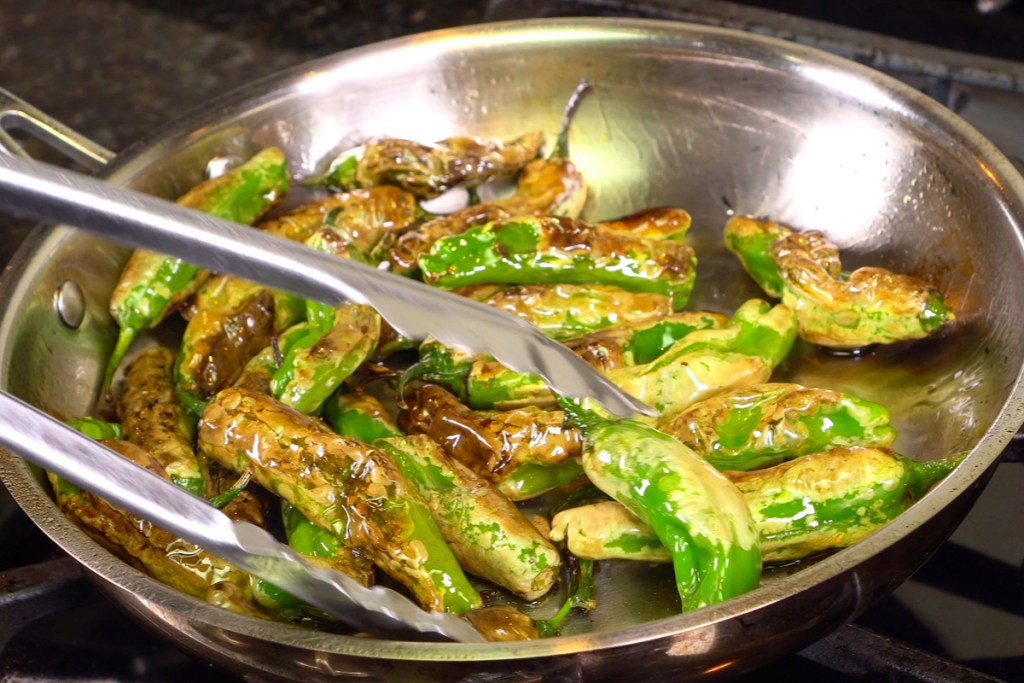Sometimes a food trend comes on quickly – one minute it’s a regional or cultural staple, and the next minute it’s on every Instagram food blogger’s page. One of the most recent foods to reach social media acclaim is the shishito pepper. Many restaurants serve shishitos roasted or “blistered,” which brings out their subtle sweet and smoky flavor.
If you’re interested in adding shishito peppers to your diet, you probably have a few questions. If you’re on a low-carb diet like keto, paleo, or Atkins, you’re likely wondering what shishito peppers look like as far as carbs are concerned.

What is a shishito pepper?
Shishito peppers are native to East Asia and are bright green in color with a slender shape. These peppers have very thin skin, which makes them quick and easy to cook. While shishitos are typically mild and slightly sweet in flavor, about one in 10 will deliver a jolt of heat, adding a roulette-like element to your meal.
Roasting, charring or blistering the peppers are the most common preparations, all requiring little more than salt, pepper, and a light coating of oil. To blister your own shishito peppers at home, follow this simple recipe:
- Heat three tablespoons of oil in a large skillet
- Add three cups of whole shishito peppers
- Cook over medium-high heat
- Remove from heat when the skin begins to form brown blisters, about six to seven minutes
- Sprinkle liberally with salt and black pepper. Serve immediately.

Nutritional profile
Beyond being delicious, shishito peppers are full of vitamins and minerals that make this one of the healthiest go-to snacks. Like other varieties of pepper, shishito peppers are low in carbs and calories, so if you’re counting your macronutrients, this is a great option for your diet that is both low carb and filling. This makes it a great alternative to snacks like buffalo wings or hot chips, as you get the same crunch and spice without the excess fat, oil, and carbohydrates.
A 3.5-ounce serving only has 20 calories. On their own, shishito peppers contain no fat, though the oil used in the most popular preparations can add fat. Using olive oil instead of vegetable oil is a good way to incorporate heart-healthy monounsaturated fats into your diet. Additionally, one serving of shishito peppers contains about five grams of carbohydrates. Fiber accounts for two of these grams, giving shishito peppers a net carb count of three grams per serving.
A serving of eight shishito peppers also provides about 170% of recommended daily vitamin C and approximately 80% of recommended daily Vitamin A. Further, these peppers are full of vitamin K, a fat-soluble vitamin that manages blood clotting, bone metabolism, and blood calcium levels. Shishito peppers also have anti-inflammatory properties and can lower LDL cholesterol in the body, the “bad” cholesterol that can clog your arteries.
Long story short, people who are watching their carb intake do not need to add shishito peppers to their list of banned foods. However, dieters should be aware that shishito peppers do contain some carbs, and they can add up after a few servings. Like with any food, pay attention to your consumption and enjoy them in moderation.
The bottom line on shishito peppers is that they taste good, are good for you, and are remarkably easy to prepare. With that in mind, these veggies are a rare win for all sides. Now that you’re informed on all of the ins and outs, you can prepare and snack on shishito peppers with confidence.
BlissMark provides information regarding health, wellness, and beauty. The information within this article is not intended to be medical advice. Before starting any diet or exercise routine, consult your physician. If you don’t have a primary care physician, the United States Health & Human Services department has a free online tool that can help you locate a clinic in your area. We are not medical professionals, have not verified or vetted any programs, and in no way intend our content to be anything more than informative and inspiring.



